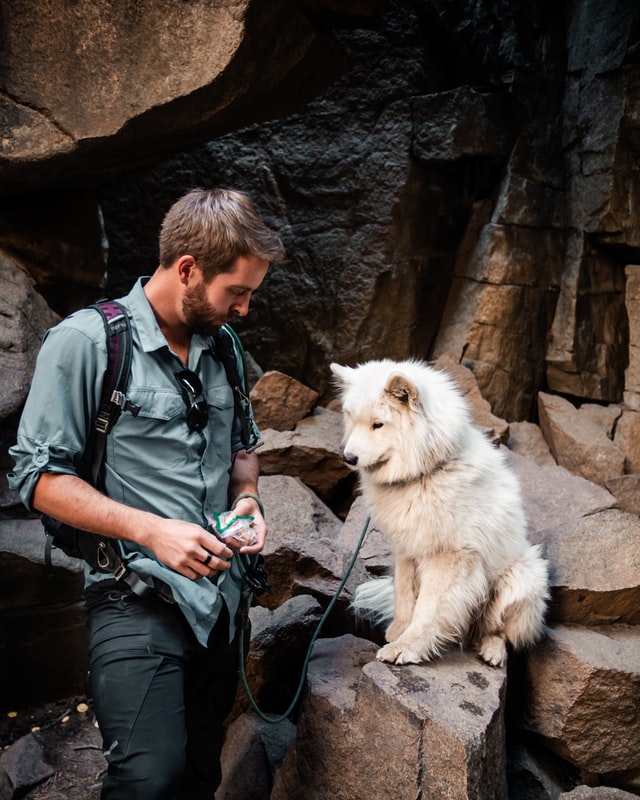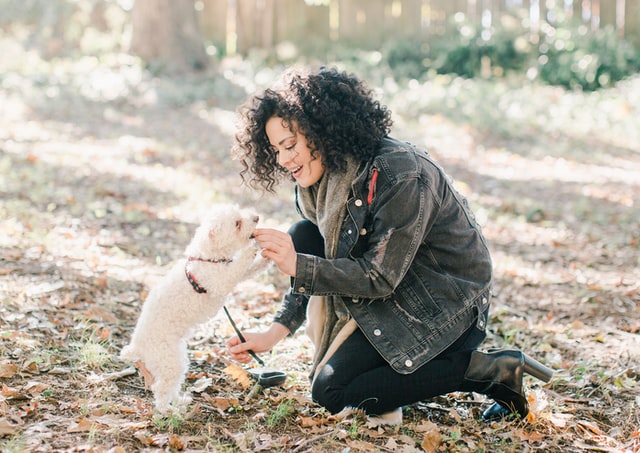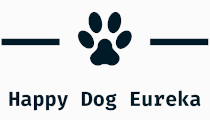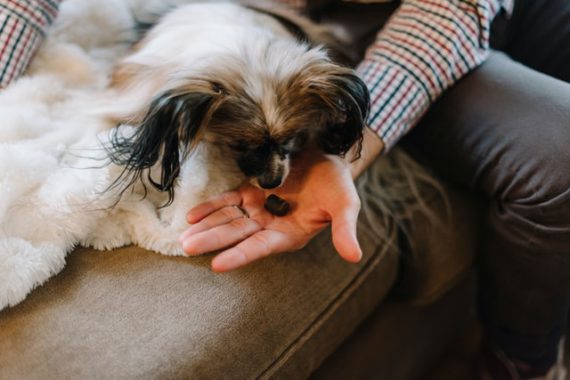Many animals, including dogs, are educated with food rewards. In fact, this is the easiest thing to use. And it is the most exploited reward for making shows and films of any kind. This is so that the animal can associate what is asked of it in the most positive way possible, but also because it is a very deep reinforcer for most animals.
However, using the treat is sometimes very scary when talking about dog education. And that’s mainly because the owners are afraid to be dependent on the treat in front of their dog! Clearly, they are afraid of having to “negotiate” non-stop with them and become a fridge. So, how do you not to be addicted, while making your dog happy?
Dog Learning Principles
In order not to fall into the trap of dependence on treats, one must first know the principles of learning the dog.

For starters, learning is a set of memorization processes implemented by the dog. It therefore memorizes indications that it can tighten up depending on the context. There are several types of learning in dogs:
- Classical conditioning is the first type of learning in which the dog’s body responds to an environmental stimulus. This is a reflex behavior so the action of the dog is not voluntary. For example, the dog that drools when it sees its bowl.
- The conditioning, which is operating, produces a voluntary behavior on the part of the dog. Like giving the paw to have a treat or a caress. The dog chooses to give his paw in order to get something.
- The dog can learn by imitation. Looking at a congener, he notices that he sits down to have his bowl, so he will do the same. During this learning, the dog will not take into account the whole environment, it will only look at its congener. On the other hand, it can also imitate by observation. It will then take into account all the elements. Here it is the human who made a request, the dog that makes and then is rewarded.
- He can learn by habituation. This learning consists of “getting used” to something, by doing it repeatedly or prolongedly. Learning by habituation goes faster, if this is associated with something positive for the dog.
- Finally, a latent learning. This one is set up without reinforcement. For example, the dog goes into the garden and notices a niche. He is not encouraged to go. But if, a few weeks later, it ends up in the same garden while it rains, the dog can then remember the niche and go to take refuge there.
The treat should not be given anytime
Let’s get back to our treats. The first principle when used is that it should not be given all the time, nor at every request of the dog. It takes a bit of organization. So I advise you not to:
- Give a free treat all the time. This is not good for the dog’s health, but you risk creating a context where some dogs ask by barking for example or by being very insistent, by jumping on their master.
- Don’t give either if your dog insisted. If not, chances are he’ll insist even more next time. So give it to him when he’s calm.
- Finally the mistake of many people is to lure the dog to the treat and remove it overnight, resulting in a dog that seems to want to do nothing unless you have a treat.

How to remove the treat
Here are the 3 main steps to take before removing the treat from learning. It is important to understand that these steps will have to be taken for any learning that requires a food reward. To explain these steps, I suggest you take the example of “sitting”:
1 – The treat in hand and the hand in front of the truffle, I make a gesture by passing gently over the dog’s head. The dog flips back, he sat down so I give him my treat. The exercise must be repeated as many times as necessary so that the dog knows that it is sitting that is rewarded. From the moment the dog understands, the word “sits” can then be placed at the same time as the dog sits down. This is so that the dog can associate the verbal indication with the gesture and the treat. This learning will have to be generalized to other situations: for example outside the home or with stimulations. Learning must be gradual, so as not to defeat the dog.
2 – Once you are sure that the dog knows the “seated”, then you can start the next step. The dog during this stage will understand that even if you do not have the treat directly in the hand that lure him, he will still be rewarded. For that, prepare your treat in the hand that does not lure. Call your dog, lure him for sitting. As soon as he is seated, congratulate him with a yes and give him the treat with the other hand. Your dog then records, that the hand that lure does not always have the reward. So it’s still valued. It’s very important. You can then repeat this exercise regularly. Afterwards, you can even slightly make your dog wait before giving him the treat (3 or 4 seconds) while saying “yesiii” or “that’s good”.
3 – The second step is very important and must be respected before moving on to it. Once your dog understands that the treat does not necessarily come from the hand that lure/makes the gesture, you can then very gradually over several days and sometimes several weeks, remove the treat. For this, reward your dog once in two, then once in three, once in four, until the treat disappears. Of course, this should not prevent you from verbally rewarding your dog or later rewarding him with a toy. The important thing is that the dog feels valued and not lose overnight, at the risk that he no longer wants to sit on request.
So you can replace the treats with a toy, but also with treats of lower value in your dog’s
eyes. It’s up to you to know your dog well in order to choose the treats that will suit you.

Remember: so be patient and go to the rhythm of your dog. Go too fast, it’s risking having foundations too fragile to hold in the long run! In addition, it is by observing your dog that you will be able to better understand it.

